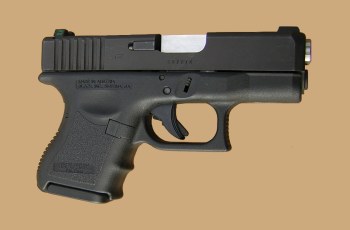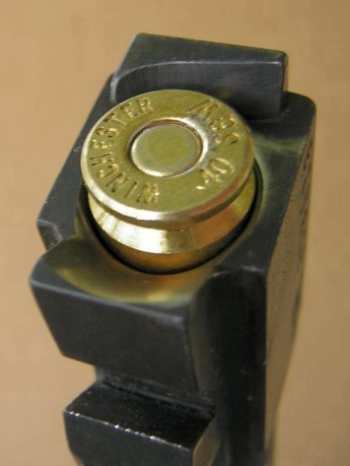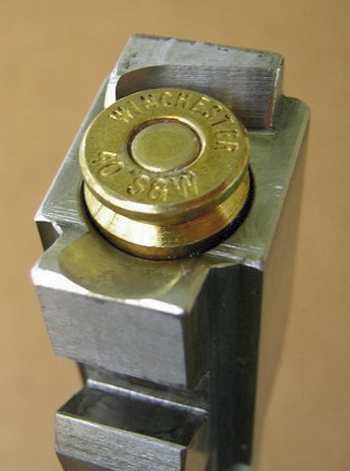Are Glock Handguns Really Safe?
Here's a hot topic among pistol shooters. Glock handguns have been getting a bad rap at the range, let alone on the Internet. I have seen most of the data, and heard several stories about Glocks blowing up. I've also thoroughly tested my Glock (and others) with different types of factory ammo and handloads - without a single problem. Here's the rest of the story . . . .

Glocks sure are ugly . . . . but they are reliable!
Let me start off by saying that I still carry a .40 cal. Glock, Model 27, and I would bet my life on it. It has never jammed or failed to fire. That's a manditory requirement for a self-defense gun. My Glock has the original factory night sights, and it's accuracy (when I first got it) was almost equal to the average snub nose .38 revolver. It's the same size as a snub nose, and it holds ten rounds instead of five. It's also FAR more powerful than any .38 Special.


Notice how much better the Bar-Sto barrel (on the right)
supports the cartridge case at the lower rear?
The problem began after several Glocks (mostly the .40 cal.) started blowing up. For those of you that think this couldn't possibly happen, take a look at this: See pictures of blown up Glocks. The cause is usually blamed on handloads, the use of lead bullets, or the polygon rifling used in Glock barrels. The pictures above show one of the main reasons why I believe these problems have plagued Glock more than other manufacturers. The picture on the left shows how little the original Glock barrel supports the case at the rear. My opinion is that this is NOT a good idea, but I don't believe that this is a problem by itself. However, it's a big problem if you reload with "weakened" used brass. This combination of problems is bad news.
I've seen factory .45 ACP cases that were seriously bulged after one firing in a 1911 barrel. That barrel was obviously throated far too deeply, and this is a problem that every gunsmith has seen before. A slight case bulge is an indication that the barrel isn't fully supporting the cartridge properly at the rear. Just imagine how much more serious this is with a .40 cal S&W that has 60% more chamber pressure than a .45 ACP.
Most self-defense handguns get very little use, and they usually use factory ammo. This is not the case with my Glock. So, just to play it safe . . . . I shopped around for a quality aftermarket barrel. Well, my fellow shooters . . . I'll tell you what . . . there sure are a LOT of junk aftermarket barrels out there. You should probably avoid them all - except for one top notch exception. I upgraded my Glock with a stainless Bar-Sto barrel. It's definitely not the cheapest, but it is by far the best quality barrel I've ever seen for a Glock.
The rounds now fit much better in the Bar-Sto barrel, and it functions perfectly. I'll admit that the Bar-Sto barrel did require a slight reshaping on the lower surface of the hood. I just copied the exact shape of the original barrel. This improved the extraction of loaded cartridges. The feed ramp also needed a bit of polishing to improve feeding to get 100% reliability. For all practical purposes, the rear of the case is now completely supported, and the cartridges don't wobble around loose like they did in the original barrel.
The accuracy of this Glock 27 is far better now, and for the first time, it shoots groups consistently under 2 1/2" at 25 yards. The .40 cal. Glock, Model 27 remains my number one choice as a concealable self defence handgun. This upgrade gives me a little "extra" confidence in my Glock, and that's a good idea if you're going to shoot often with hot handloads. Be sure to test any self-defence handgun after making ANY modifications.
